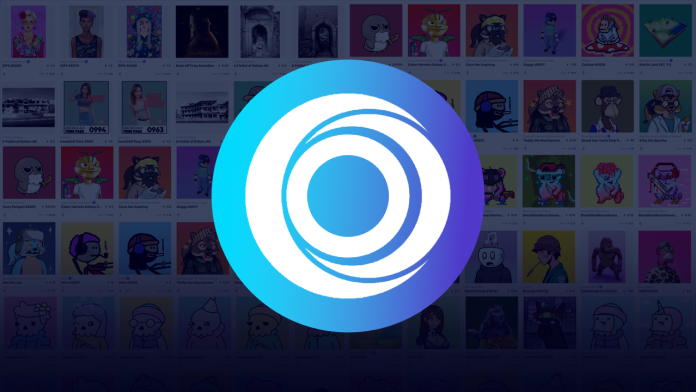With a trading volume of over $22 billion so far and over 1.3 million traders (second only to the game Axie Infinity), the OpenSea NFT marketplace is by far the most popular platform for artists and collectors of non-fungible digital art on Web3.
However, there is a new challenger in the midst now. With its name derived from the mathematical formula of a perfect circle, X2Y2 boldly claims to build “a truly decentralized NFT market and give it back to the community.”
But what is the problem with OpenSea, and how does X2Y2 address it?
Problems with OpenSea
Web3 is the decentralized version of our existing web ecosystem (think Google, Facebook, Amazon, and other centralized entities). Imagine a centralized project gains so much popularity that it becomes a monopoly in Web3; not only does this raise eyebrows but also puts a question mark on the degree of decentralization in Web3.
That is what happened with OpenSea, as its claims to be a decentralized NFT marketplace turned out to be false.
The main problem with OpenSea is that it is not a decentralized project. OpenSea is a private company owned by investors not any different from Twitter or Facebook.
Unlike a Web3 project, OpenSea does not have a token and is not part-owned by the community.
It would appear that OpenSea successfully cashed in on the Web3 hype. And depending on who you talk to, this may or may not be a bad thing. It certainly does not make OpenSea an exception in Web3.
OpenSea also found itself in the news for the wrong reasons, including its head of product involvement in trading with insider information, criticism by the community over its plans to go public, and its hands-off attitude towards dealing with issues.
Apart from this, OpenSea has also been a victim of its success and has been a target of system issues, exploit rumors, and phishing attacks.
How does X2Y2 solve these problems?
According to the X2Y2 lite paper, it intends to bring the community front and center by doing a couple of things.
- Have a token. X2Y2 is a Web3 decentralized project and will have a native token, unlike OpenSea.
- Share the token with the community via an airdrop.
- The airdrop will not exclude anybody, unlike a recent airdrop done by another NFT marketplace called LooksRare, which targeted only those users with more than 3ETH transactions (a.k.a whales).
- Have an Initial Liquidity Offer (ILO), also known as Initial DEX Offering (IDO), to generate liquidity instead of a private sale for partners or investors.
- Have lower trading fees. The trading fee is the amount charged by the NFT marketplace on your buy and sell transactions. X2Y2 has a trading fee of 2% compared to 2.5% on OpenSea.
- Have no trading rewards (rewards associated with buying and selling of NFTs) but only staking rewards (rewards associated with staking of NFTs instead of selling). This deliberate decision is to prevent something called wash trading from artificially boosting the value of an asset.
Apart from the differences in the business model, X2Y2 plans to be a better user experience for both contributors and traders with features like bulk sending and listing, instant push notifications, integrated rarity ranking and analysis and bidding on a collection.
For future releases, X2Y2 plans to add:
- Availability notifications filtered by trait
- Direct purchase for multiple items from the list
- Multi-exchange aggregation
- A 3D/VR immersive NFT marketplace UI/UX on displaying, socializing, and trading.
X2Y2’s endgame is to transfer its leadership and financial control from the team to the hands of a DAO, doubling down on its promise to be a community-driven project.
What does this mean for the average user?
X2Y2 seems to have the right building blocks to become a decentralized version of OpenSea but its growth will depend more on its ease of adoption and overall user experience as-is for any new project.
OpenSea has had to deal with system outages and attacks on its platform, which could be a consequence of its enormous growth and status within this space. It would be only fair to assume that any platform could come under such pressures and that the only way to deal with these problems is to face them head-on.
OpenSea, having grown to capture 97.17% of all trading volumes across all marketplaces, is also a testament to its user experience and ease of adoption.
As a user, this is not particularly great news. Simple market economics says that the more the competition, the better it is for the end-user. As a contributor, you should also have the option to pick and choose which platform suits your creation the best.
Only time will tell how X2Y2 will perform, but at the moment, OpenSea is still the best at its game.






